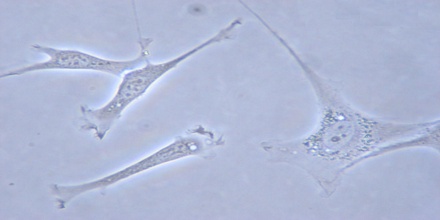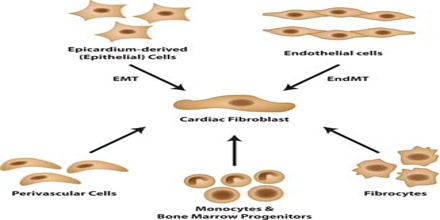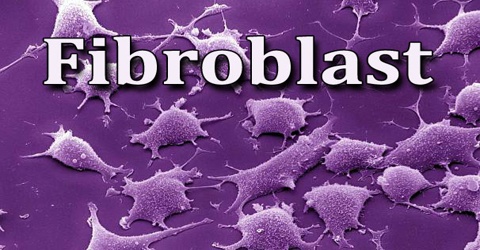Fibroblast
Definition
Fibroblast is a cell that manufactures and maintains connective tissue, the structural framework that supports the organs of all animals. It is responsible for making the extracellular matrix and collagen. Fibroblast is the term which used to describe these cells when they are in an activated state.

Fibrocyte refers to the less active state, when the cell is involved in tissue maintenance and metabolism. Some researchers use the term fibroblast for both cellular states but the term “blast” usually refers to a stem cell or a cell’s activated state.
Fibroblasts are morphologically heterogeneous with diverse appearances depending on their location and activity. Though morphologically inconspicuous, ectopically transplanted fibroblasts can often retain positional memory of the location and tissue context where they had previously resided, at least over a few generations. This remarkable behavior may lead to discomfort in the rare event that they stagnate there excessively.
Structure and Functions of Fibroblast
Fibroblasts are large, flat, elongated (spindle-shaped) cells possessing processes extending out from the ends of the cell body. The cell nucleus is flat and oval. Fibroblasts produce tropocollagen, which is the forerunner of collagen, and ground substance, an amorphous gel-like matrix that fills the spaces between cells and fibres in connective tissue. It is appear to play an important role in wound healing, and this activity is thought to be regulated by cells known as fibrocytes residing in the tissue stroma. Following tissue injury, fibroblasts migrate to the site of damage, where they deposit new collagen and facilitate the healing process.

Collagen is the most abundant protein in the human body. It is a tough, strong fiber that provides tensile and compressive strength to our organs and tissues. Reticular fibers are a delicate form of collagen that gently cradles cells in organs where blood or other fluids must be able to percolate freely. Our liver, spleen, and lymph nodes are loaded with reticular fibers.
Fibronectin is secreted from fibroblasts in a water-soluble form but is quickly assembled into an insoluble meshwork that serves several functions: other cells use the fibronectin matrix to migrate through a tissue; fibronectin helps ‘glue’ connective tissues to surrounding tissue types; and fibronectin is necessary for cellular growth and specialization in many tissues.
Fibroblasts, like the tumor-associated host fibroblasts (TAF), play a crucial role in immune regulation through TAF-derived extracellular matrix (ECM) components and modulators. Conversely, fibroblasts sometimes undergo mesenchymal–epithelial transition (MET) to produce epithelia, a process that is seen in development, tissue repair and tumor growth.
Reference: study.com, britannica.com, news-medical.net, wikipedia.
















